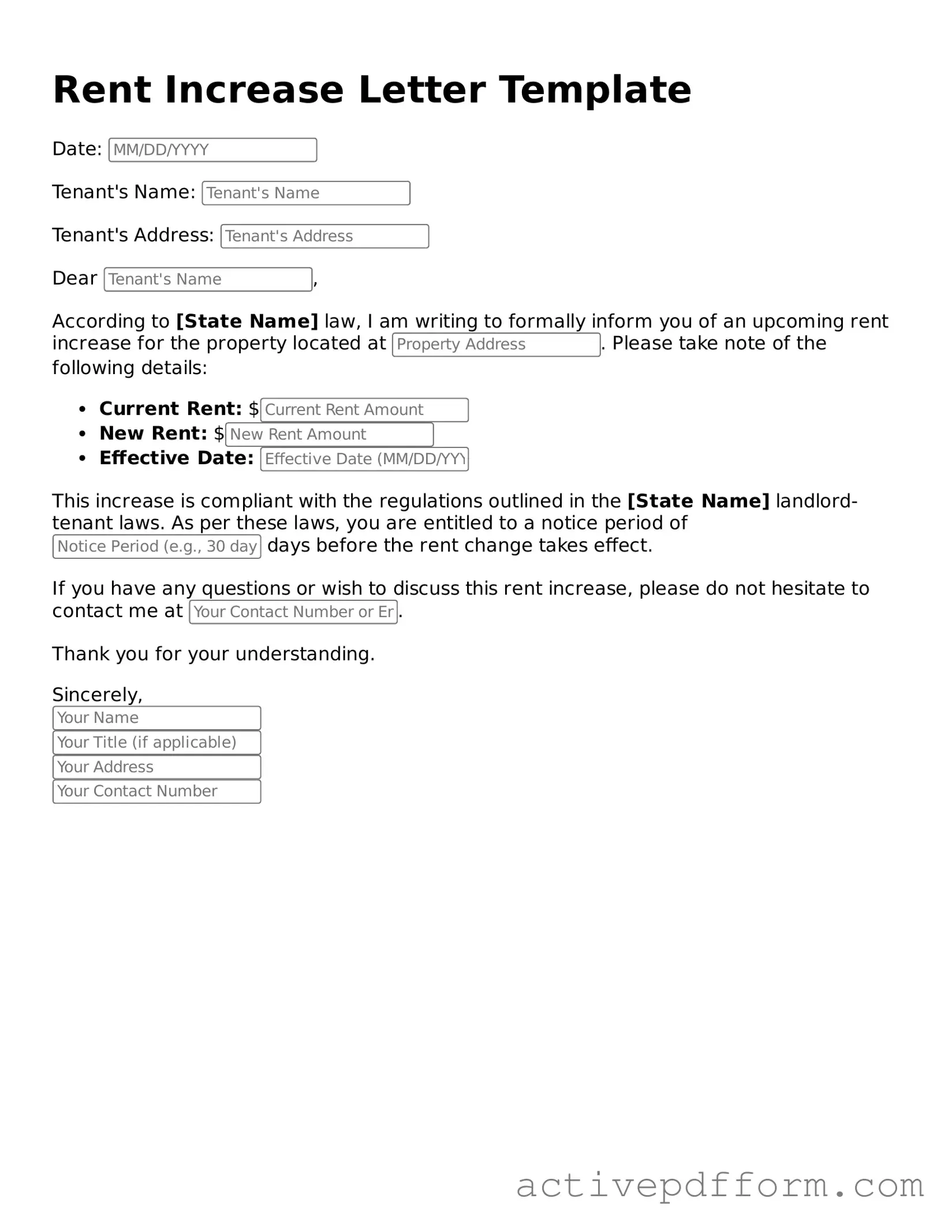What is a Rent Increase Letter?
A Rent Increase Letter is a formal document that landlords use to notify tenants about an upcoming increase in rent. This letter typically includes the new rental amount, the effective date of the increase, and any relevant details regarding the change. It serves as a way to maintain clear communication between landlords and tenants, ensuring that both parties are aware of the new terms of the lease agreement.
When should I send a Rent Increase Letter?
Timing is crucial when it comes to sending a Rent Increase Letter. Most states have specific laws regarding how much notice a landlord must provide before implementing a rent increase. Generally, this notice period can range from 30 to 60 days. It’s important to check local regulations to ensure compliance. Sending the letter well in advance allows tenants time to adjust their budget or consider their options.
What information should be included in the letter?
A well-crafted Rent Increase Letter should include several key pieces of information. Start with the date of the letter, the tenant's name and address, and a clear statement indicating the current rent amount and the new rent amount. Also, specify the effective date of the increase and any reasons for the change, if applicable. Ending the letter with a polite closing and contact information for any questions can foster a positive landlord-tenant relationship.
Can I increase rent without a written letter?
While a verbal notice might be sufficient in some cases, it is always best practice to provide a written Rent Increase Letter. A written document serves as proof of the notice and protects both parties in case of disputes. Additionally, many states require written notice for rent increases to be legally valid. Therefore, it’s advisable to formalize the communication to avoid any misunderstandings.
What if a tenant refuses to pay the increased rent?
If a tenant refuses to pay the increased rent, it’s important to first review the lease agreement and local laws. The lease may outline the process for handling disputes over rent increases. Open communication is key; discussing the situation with the tenant can sometimes resolve misunderstandings. If the issue persists, landlords may need to consider legal options, such as eviction, but this should be a last resort after all other avenues have been explored.
Is there a limit to how much I can increase the rent?
The limit on rent increases can vary widely depending on local laws and regulations. Some areas have rent control laws that cap the amount and frequency of rent increases. Even in places without rent control, landlords should consider market rates and tenant relationships when deciding on an increase. It’s wise to stay informed about local housing laws to ensure that any increase is compliant and fair.
